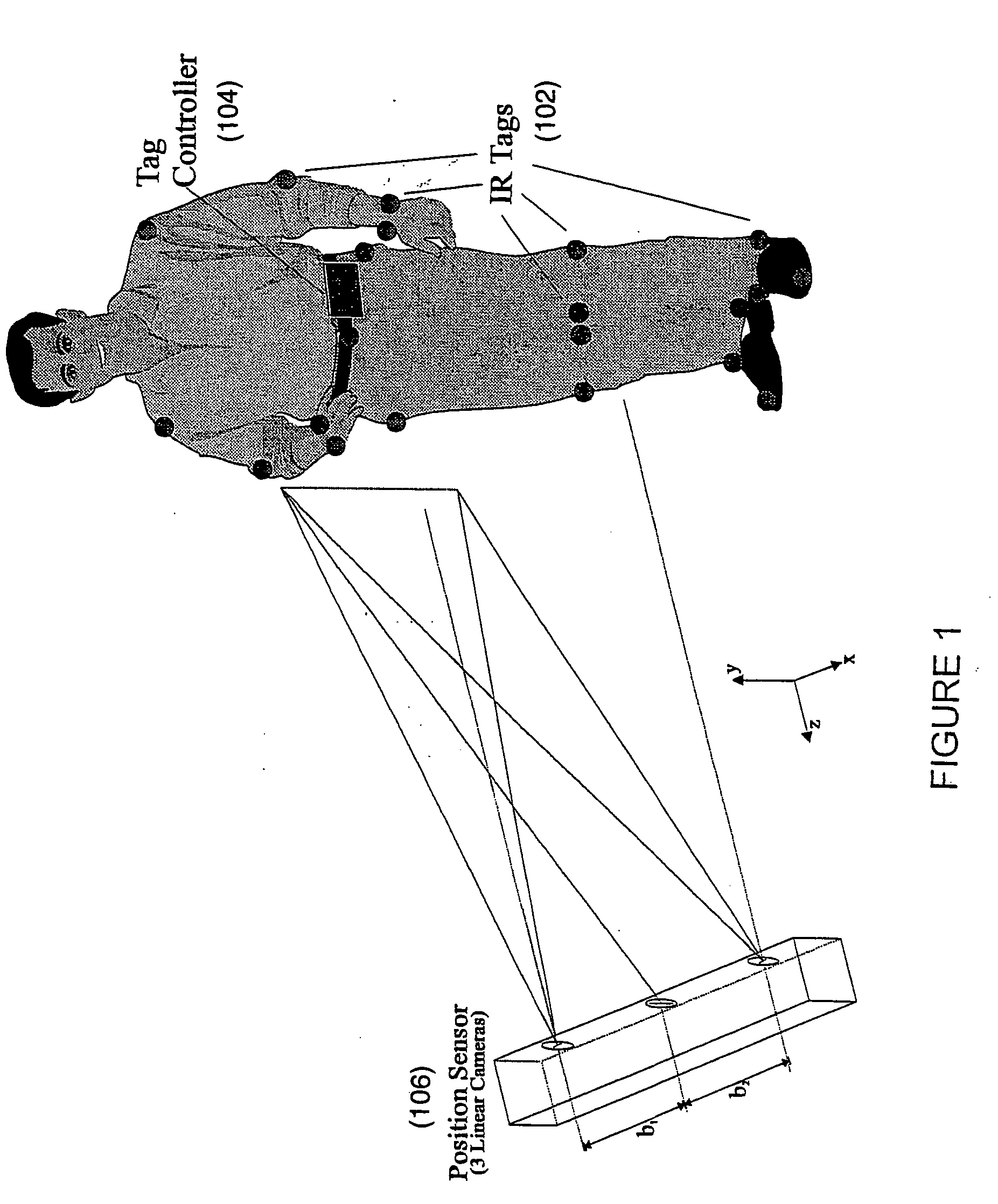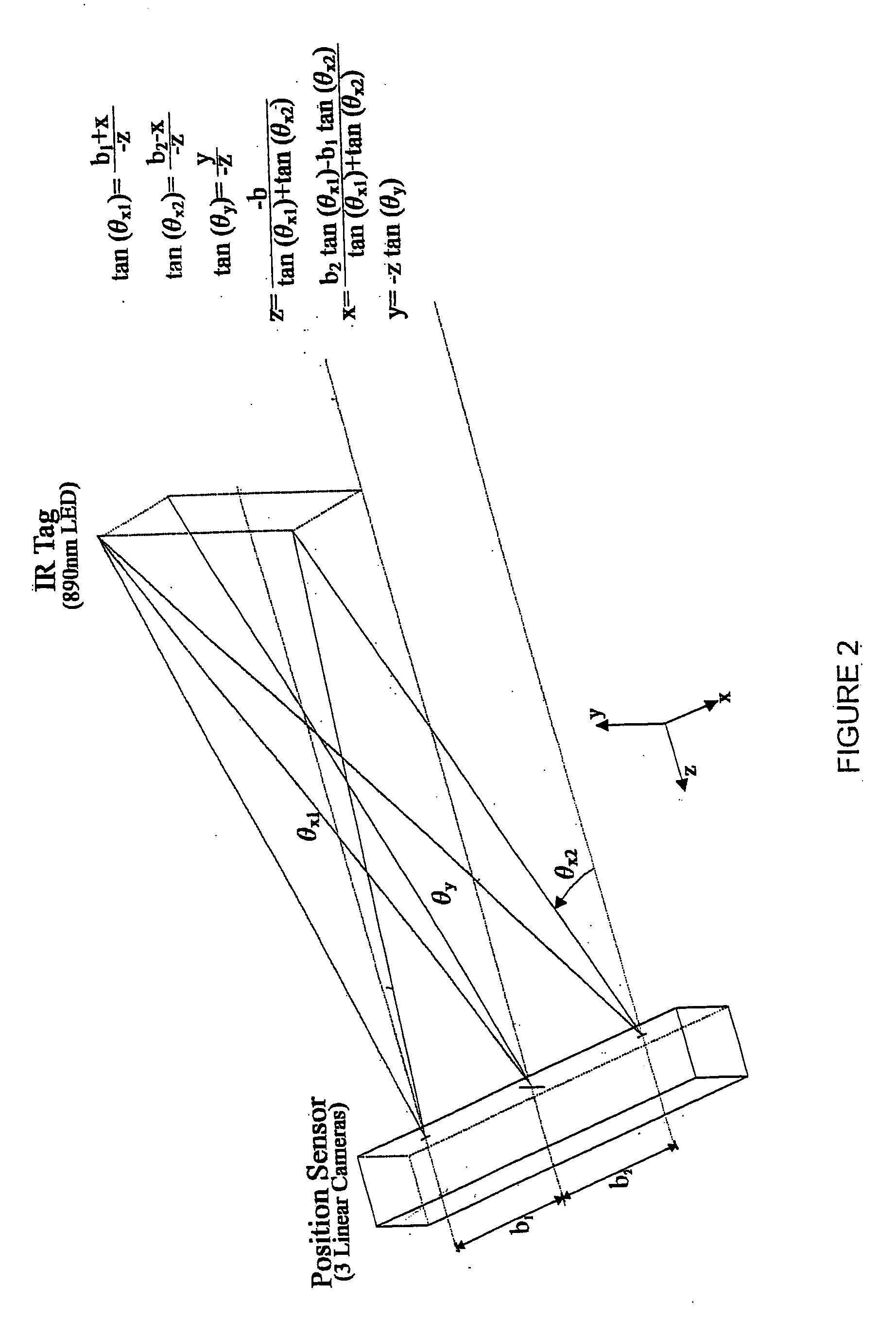Optical body tracker
a body tracker and optical technology, applied in the field of motion tracking, can solve the problems of large errors in the estimation of three-dimensional target location, and achieve the effect of simplifying identification
- Summary
- Abstract
- Description
- Claims
- Application Information
AI Technical Summary
Benefits of technology
Problems solved by technology
Method used
Image
Examples
Embodiment Construction
[0020] This invention resides in a real time computer vision system capable of tracking the motion of objects, including the human body or portions thereof. The system is capable of tracking the gestures and behaviors through an unstructured and possibly cluttered environment, then outputs the position of the tracked features in each observed scene.
[0021] To determine position in an immersive environment, a user is preferably outfitted with active infrared emitters which are tracked by custom linear cameras. A set of design specifications associated with an implemented system are shown in Table 1:
TABLE 1Design Specification of Existing Body Tracking SystemField of View45 × 45 degreesRange 7 metersAccuracy 2.5 mm @ 5 metersNumbers of sensors1-25530 Sensor scan rate 30 HzCamera frame rate900 HzLatency5 milliseconds maximum
[0022] The implemented system is capable of determining the location of 30 points, 30 times a second with a resolution of 2.5 mm within 5 meters of the tracking s...
PUM
 Login to View More
Login to View More Abstract
Description
Claims
Application Information
 Login to View More
Login to View More - R&D
- Intellectual Property
- Life Sciences
- Materials
- Tech Scout
- Unparalleled Data Quality
- Higher Quality Content
- 60% Fewer Hallucinations
Browse by: Latest US Patents, China's latest patents, Technical Efficacy Thesaurus, Application Domain, Technology Topic, Popular Technical Reports.
© 2025 PatSnap. All rights reserved.Legal|Privacy policy|Modern Slavery Act Transparency Statement|Sitemap|About US| Contact US: help@patsnap.com



